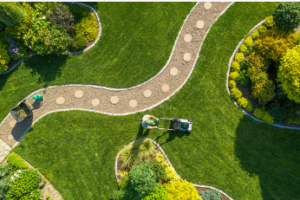Landscaping using native plants adapted to Adelaide’s climate and environmental conditions can help reduce water use, soil erosion and pollution. It can also reduce the need for fertilisers and pesticides.
Use reclaimed materials for any outdoor structures to reduce the environmental impact further. Switch to organic lawn fertilisers instead of synthetic ones, and practice good watering and mowing practices. For more information about sustainable landscape design Adelaide, click here.
Use native plants
 As more people become aware of the impact of their landscaping choices on the environment, many are shifting away from traditional lawns to native gardens. These plants are easy to care for, require less water than grass and can provide wildlife shelter and food. They also have a variety of colours all year round. Native plants are often more resilient than non-natives, and many have deep roots that help them retain water during dry weather. It is especially important in areas with high temperatures and drought conditions.
As more people become aware of the impact of their landscaping choices on the environment, many are shifting away from traditional lawns to native gardens. These plants are easy to care for, require less water than grass and can provide wildlife shelter and food. They also have a variety of colours all year round. Native plants are often more resilient than non-natives, and many have deep roots that help them retain water during dry weather. It is especially important in areas with high temperatures and drought conditions.
Many Australian landscape designers use native plants to create modern garden styles with bold textures and colours that can be used in large and small gardens. Native flowers and trees can be combined with ornamental shrubs and perennials to create a visually appealing and environmentally friendly garden. Native plants can also provide a range of benefits to local animals, including pollinators and habitat. Many native plants are drought and frost-tolerant, requiring little water and no fertiliser or pesticides. They can be grown in many ways, from formal beds and borders to naturalistic gardens and informal groves.
Another benefit of using native plants is that they can be used in sustainable features such as rain gardens and bio-retention areas. They are also suitable for xeriscaping, a form of low-water gardening that uses drought-tolerant plants and requires less watering. Native plants are also rarely invasive, and they help to preserve biodiversity.
A landscape designer can help you choose the right plants for your garden. They will have ecological, aesthetic and technical training and can produce a landscape plan that maximises your space. They can also advise how to care for your plants, such as when to water them and what mulch is best. They can advise on other landscaping features like paving, walls, fences and outdoor lighting.
Create wildlife habitats
Landscapes designed to support biodiversity provide a host of benefits for the community. These include soil conservation, onsite stormwater management, site-appropriate trees and plants, sustainable materials, easier maintenance, and increased community and customer value. Creating biodiversity-rich landscapes is one of the most important things you can do to achieve sustainability.
You need to integrate your garden into the surrounding ecosystem to create a functional landscape that supports biodiversity. It can be done by incorporating native plants into your landscape’s design and by introducing wildlife habitat features.
For example, you can include small streams or ponds in your landscape to attract birds and other wildlife. You can also use hedgerows or wildflower meadows to encourage biodiversity in your garden. Choosing the correct species of native plant is critical, as they can adapt to the local climate and soil conditions.
Another way to enhance the biodiversity in your landscape is to incorporate green walls. These vertical structures covered with vegetation can be used to add shade to the surrounding area and reduce energy consumption. They can also provide a habitat for wildlife and improve air quality. Green walls can be built at commercial or residential properties and constructed from various materials.
A professional landscaper can help you design a sustainable garden that is both beautiful and environmentally friendly. They will analyse your home and its architecture to determine the best type of landscape for your space. They will also consider drainage, solar orientation, and energy usage issues. They can even help you install new features like irrigation and fences and address concerns such as water usage and erosion control.
Recycle your yard trimmings.
An excellent sustainable garden aims for an autonomous landscape that conserves resources and uses minimal water, energy and chemical inputs. It also focuses on preserving and reducing waste and preventing air, soil and water pollution. Some practices that are important to sustainable landscaping include composting, reducing the use of chemical fertilisers and pesticides, using native plants where possible, xeriscaping (water-wise gardening) and the careful selection of hardscape materials. For more information about sustainable landscape design Adelaide, click here.